clip studio ex 3d model how to extract drawing lines
And then, you merely scanned or took a picture of your hand-drawn line fine art with your smartphone and, you go to color information technology to observe that it just doesn't await as ready to color as the original. At times like these, it'southward best to extract your line piece of work and convert information technology into something more suited for digital coloring. You tin can do this past using the Convert Brightness to Opacity role in Clip Studio Paint and SAI or the Alpha Channel function in Photoshop.
Adjusting the Image Color
Using our graphics software of selection, we'll begin past opening the scanned or photo image of our analogy.
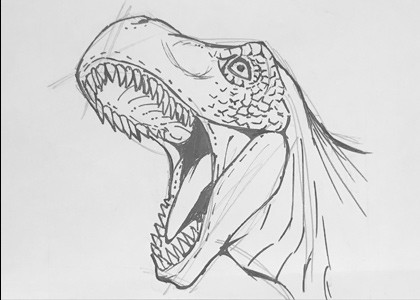
Even though the original prototype is black lines on white newspaper, the imported image ends up with either a grey tone to it, or the lines aren't every bit strong as in the original. To set up this outcome, we will arrange the image so that the background is completely white and the lines are solid and articulate. The method we volition employ to achieve this depends on the graphics software we want to utilise.
Photoshop & Clip Studio Pigment
Starting time, we'll suit the color using an adjustment layer (Tonal Correction layer).
● Brightness/Contrast
Use Effulgence/Contrast to brighten the overall epitome.
In Photoshop:
Layer carte du jour > New Adjustment Layer > Brightness/Contrast
In Clip Studio Paint:
Layer menu > New Correction Layer > Effulgence/Contrast
From the displayed carte, employ the Brightness slider to brand the paper background equally white equally possible without losing too much line art particular.
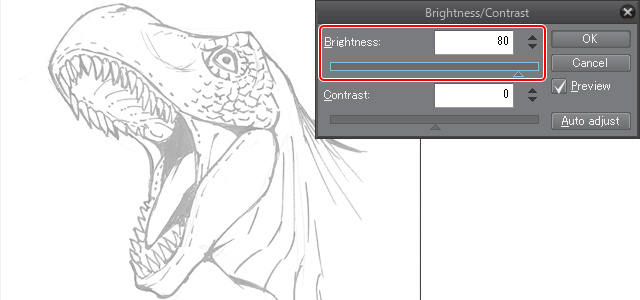
● Level Correction
Next, use Level Correction to make the lines more distinct.
In Photoshop:
Layer menu > New Adjustment Layer > Levels
In Clip Studio Paint:
Layer bill of fare > New Correction Layer > Level Correction
From the displayed menu, operate the triangle nodes at the bottom of the graph by dragging them right or left as needed. This allows you to whiten the color and shadows of the newspaper, besides as thicken and darken the line work.
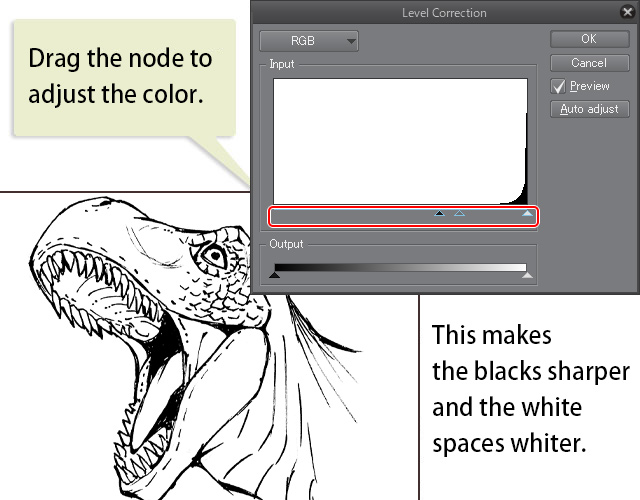
Once complete, the adjustments volition be created in the course of an adjustment layer (Tonal Correction layer). If yous aren't quite satisfied with the results, double click the adjustment layer icon to brandish the bill of fare again and readjust your settings.
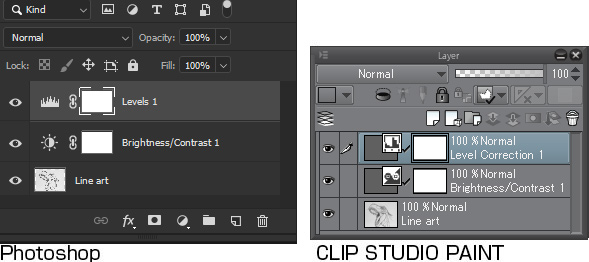
Lastly, select the Layer menu > Flatten epitome and the line art layer volition merge with the adjustment layer (Tonal Correction layer).
Just in instance, I recommend saving your file in one case before merging.
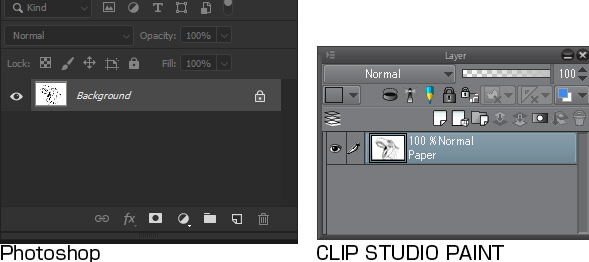
Adjusting the Image Color: Pigment Tool SAI
For SAI, select and set the Filter carte du jour > Effulgence/Dissimilarity settings.
In the Effulgence and Contrast dialog, adjust the Effulgence slider so that the paper appears white. Make sure that thin lines do not disappear or become as well thin while adjusting. One time satisfied, click OK.
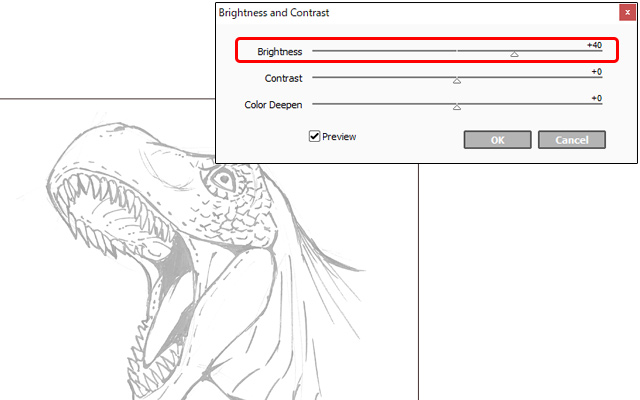
Select the [Filter] menu > [Brightness/Dissimilarity] again.
This fourth dimension, adjust the [Contrast] and [Brightness] sliders to darken the lines. Take care that lines don't become besides thick or extend by your original line work.
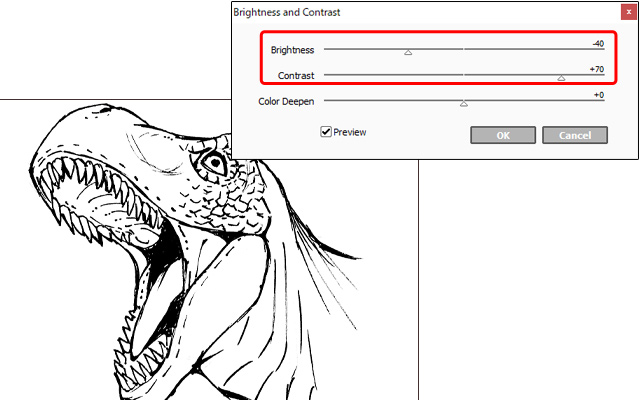
Completing the color adjustments
Compared to the original prototype, we have created much nicer looking line art, dark lines on a white background.
In order to make the coloring step go more than easily, we will "excerpt" the line work past transforming the white background into a transparent background.
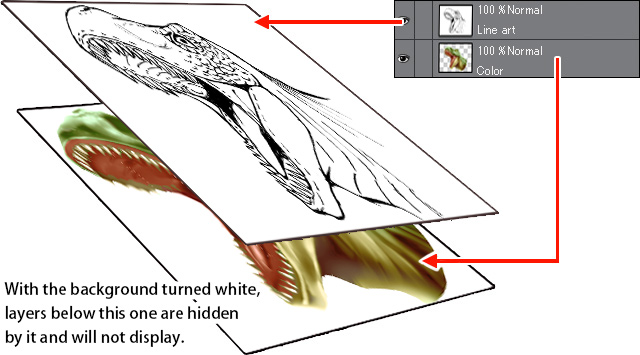
Extracting Line Art: Clip Studio Pigment & SAI
We will turn the white transparent past using "convert brightness to opacity." Select the following commands to exercise this.
Prune Studio Paint:
Edit carte du jour > Convert brightness to opacity
SAI:
Layer menu > Luminance to Transparency
With this, the line art has been extracted!

Note:
Afterwards using Clip Studio Paint'south Catechumen brightness to opacity, a transparent checkered pattern volition appear.
Select the Layer menu > New Layer > Paper to create a new paper layer over the transparent pattern.
Extracting Line Fine art: Photoshop
Using Alpha Channel, we will turn the white transparent.
The Alpha Channel part can extract transparency, uses selections as a mask for editing, and has a saving ability.
Note: The Alpha Channel feature cannot be used in Photoshop Elements.
● Cutting the line art
Let's cut the line art from the canvass.
(1) Select the Selection bill of fare > All
(2) Select the Edit menu > Cut
● Creating an Alpha Aqueduct
Select the Window carte du jour > Channels to display and create an Alpha Aqueduct.
(1) Click Create New Channel from the Channels panel
(ii) Select the created Blastoff Aqueduct
(3) Select the Edit menu > Paste to paste the line art to the Alpha Channel.
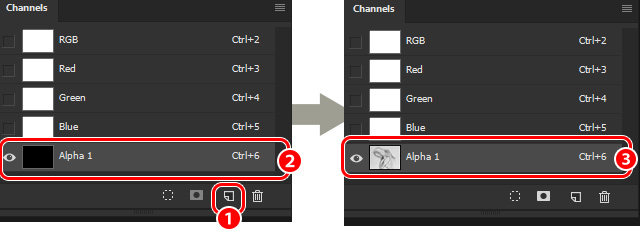
● Creating a option
Allow'due south now create a selection based on the opacity and line thickness.
(1) Select the Pick menu > Load Selection
(ii) Select the Alpha Aqueduct nosotros used earlier from Channels
(iii) Check Invert and click OK
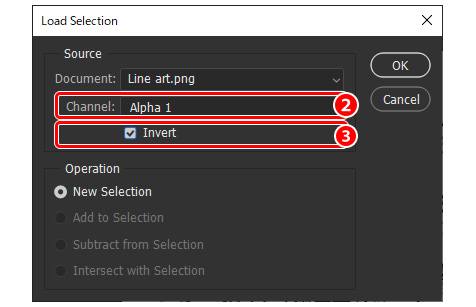
● Creating line art
Next, we'll make a new layer based on the line art.
(1) Create a new layer past selecting Create a New Layer from the Layer console
(ii) A canvas with the dimensions of the selected area will appear
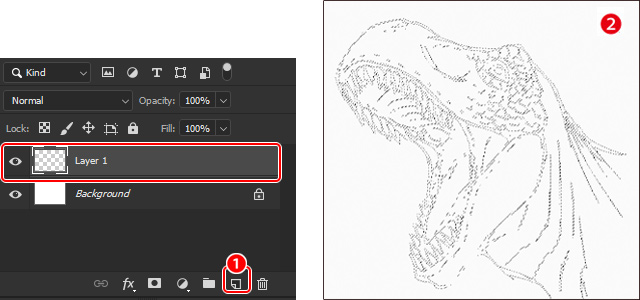
(3) Select the Edit card > Fill
(four) Select a color to fill from Contents
(5) Uncheck the Preserve Transparency choice and click OK
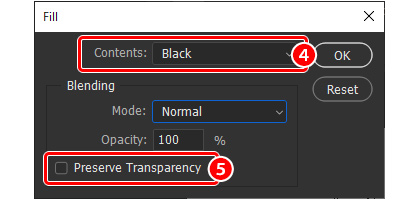
With this, the line art has been extracted!
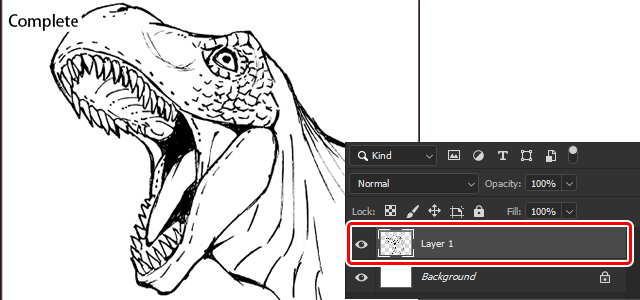
The Line Fine art is At present Gear up!
With this finished line fine art, you tin add colored layers underneath the line art without erasing the lines.
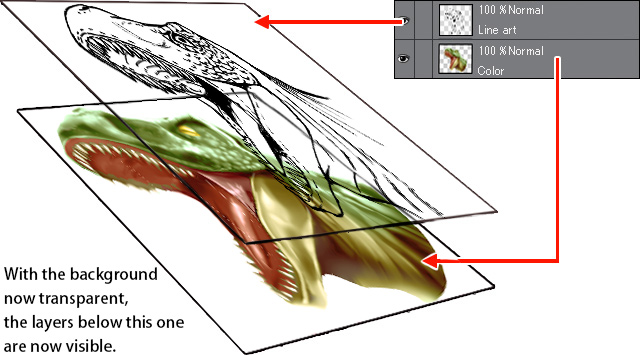
Source: https://www.clipstudio.net/how-to-draw/archives/154453
Belum ada Komentar untuk "clip studio ex 3d model how to extract drawing lines"
Posting Komentar